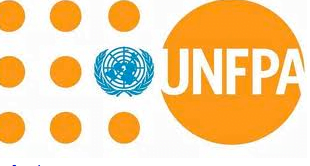Ed note. This is a guest post from Isobel Coleman Senior Fellow at the Council on Foreign Relations for U.S. Foreign Policy, Director of the Civil Society, Markets, and Democracy Initiative. Cross posted at CFR.
My colleague Gayle Lemmon and I just published a new Council on Foreign Relations report, “Family Planning and U.S. Foreign Policy.” This is a timely subject, given the recent Washington budget battles that saw proposals on the table to gut support for international family planning, even though it is one of the most cost-efficient and successful foreign assistance programs. Today, more than half of women of reproductive age in the developing world, some 600 million, now use modern contraception, up from only ten percent in 1960. Still, there are approximately 215 million women, mostly in sub-Saharan Africa and South Asia, who want to avoid pregnancy but do not have access to contraception. At the end of the budget process, U.S. funding for international planning fell by only five percent, but as Ambassador Mark Dybul, a member of the bipartisan study group we convened for the report, predicted in our launch event, the bruising FY 2011 budget contest will be a “sandbox” compared with upcoming years.
U.S. support for international family planning has long been a controversial issue. Conservatives tend to view family planning as code for abortion, even though U.S. law, dating to the 1973 Helms Amendment, prohibits U.S. foreign assistance funds from being used for abortion. Indeed, increased access to international family planning is one of the most effective ways to reduce abortion in developing countries. Last year, a staggering 35 million abortions occurred in developing countries, some 20 million of which were unsafe abortions resulting in the death of 47,000 women. Studies have shown that meeting demand for family planning would reduce the number of abortions in developing countries by seventy percent.
Increased access to family planning could also reduce maternal deaths by a third, from approximately 360,000 to 240,000. For a woman in the developing world, the lifetime risk of dying from pregnancy is still one of the greatest threats she will face. In developed countries, 1 out of 4,300 women will lose her life as a consequence of pregnancy, compared to sub-Saharan Africa, where that figure soars to 1 in 31, and Afghanistan, where the lifetime risk of dying from pregnancy is 1 out of 7. Providing women with contraception so that they can determine the size of their family and the timing and spacing of their pregnancies reduces the number of high-risk pregnancies and saves lives.
There are many other compelling statistics cited in the report. Also available online are several background papers written by experts from various fields that helped inform the report. One by Joy Phumaphi looks at the connection between family planning, demographics, and economic growth; another by Koki Agarwal examines the impact of family planning on global health, especially maternal health and under-five child mortality; another by Geoffrey Dabelko focuses on the connection between family planning and global environmental sustainability; and another by Elizabeth Leahy Madsen looks at the linkages between family planning, demography, and international security. I look forward to your comments.
